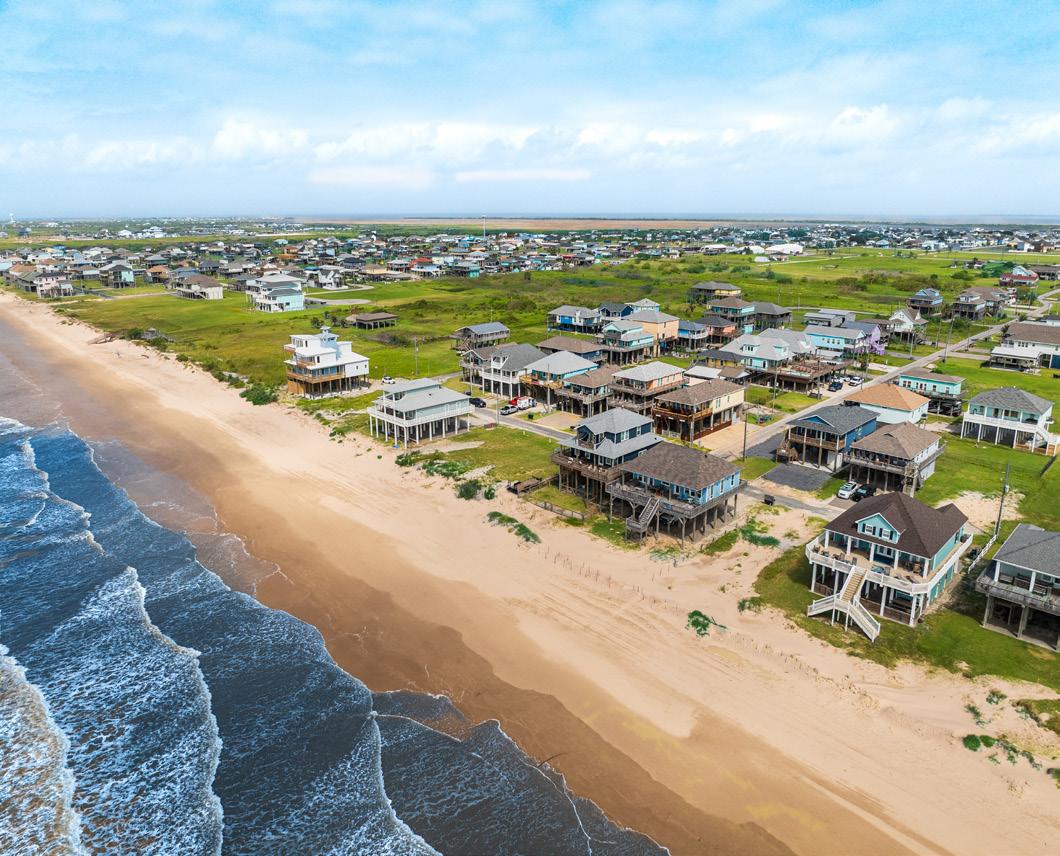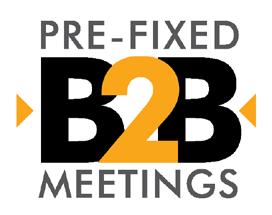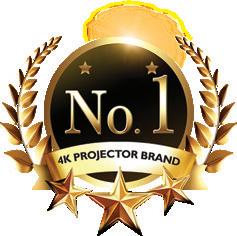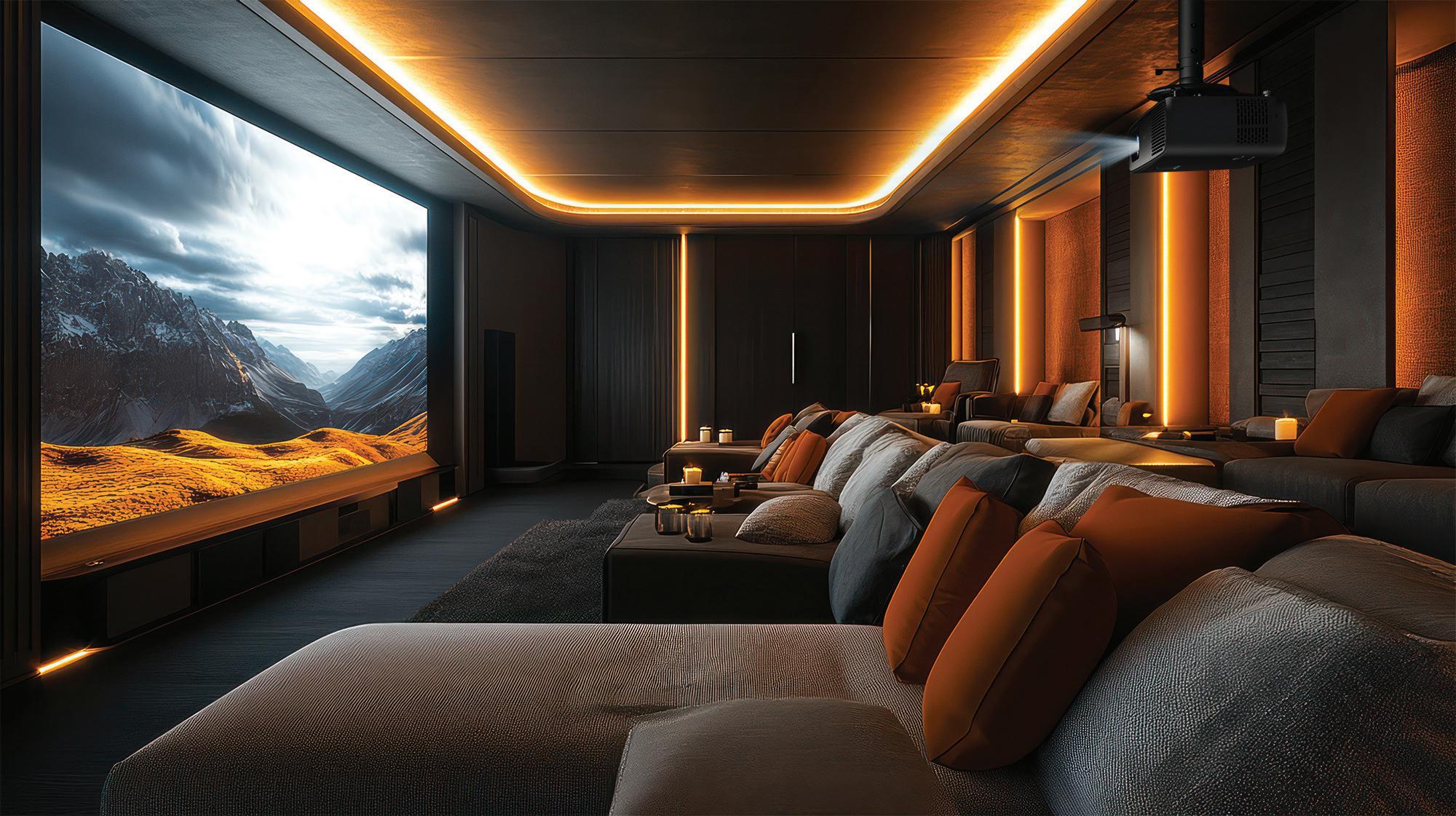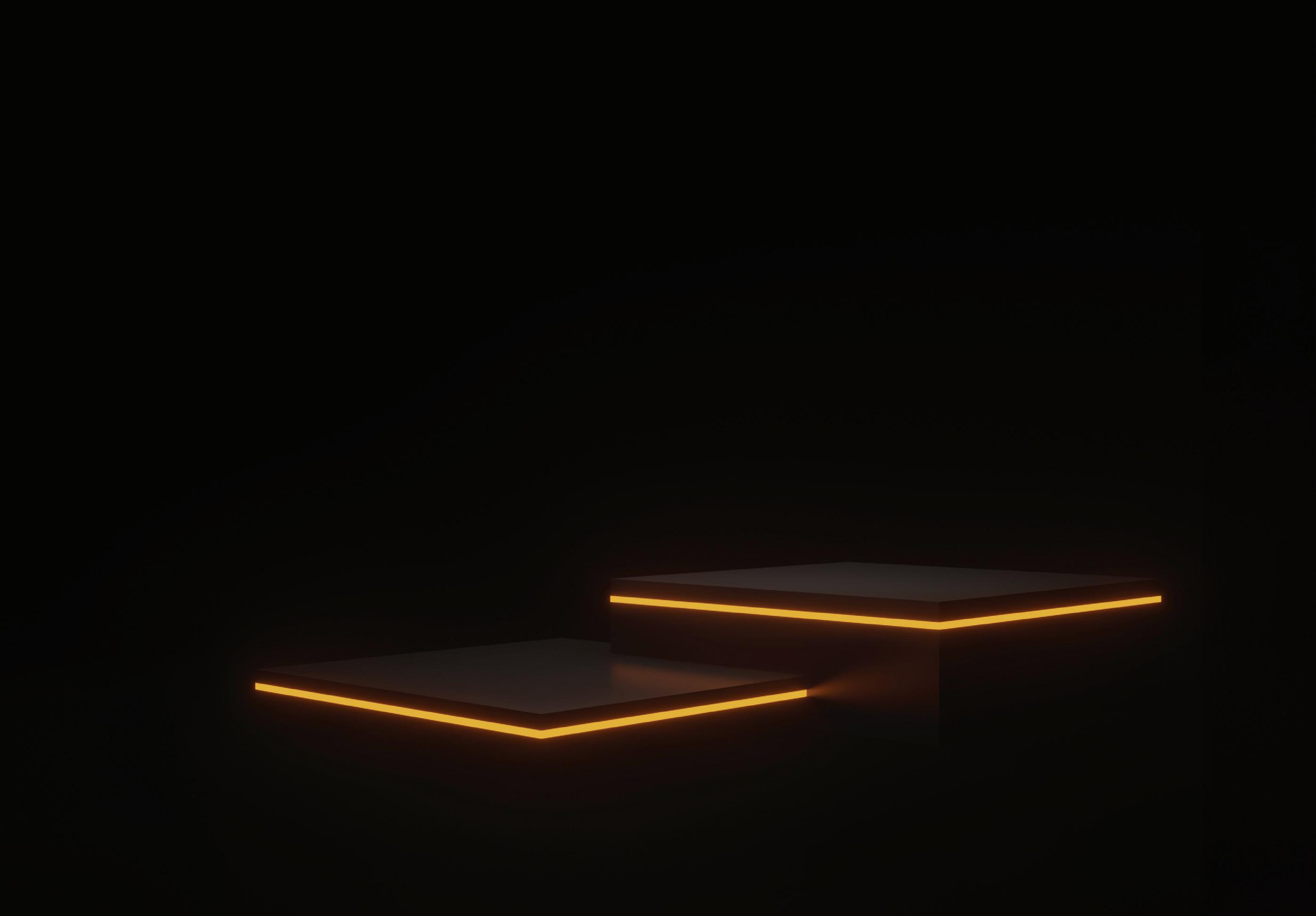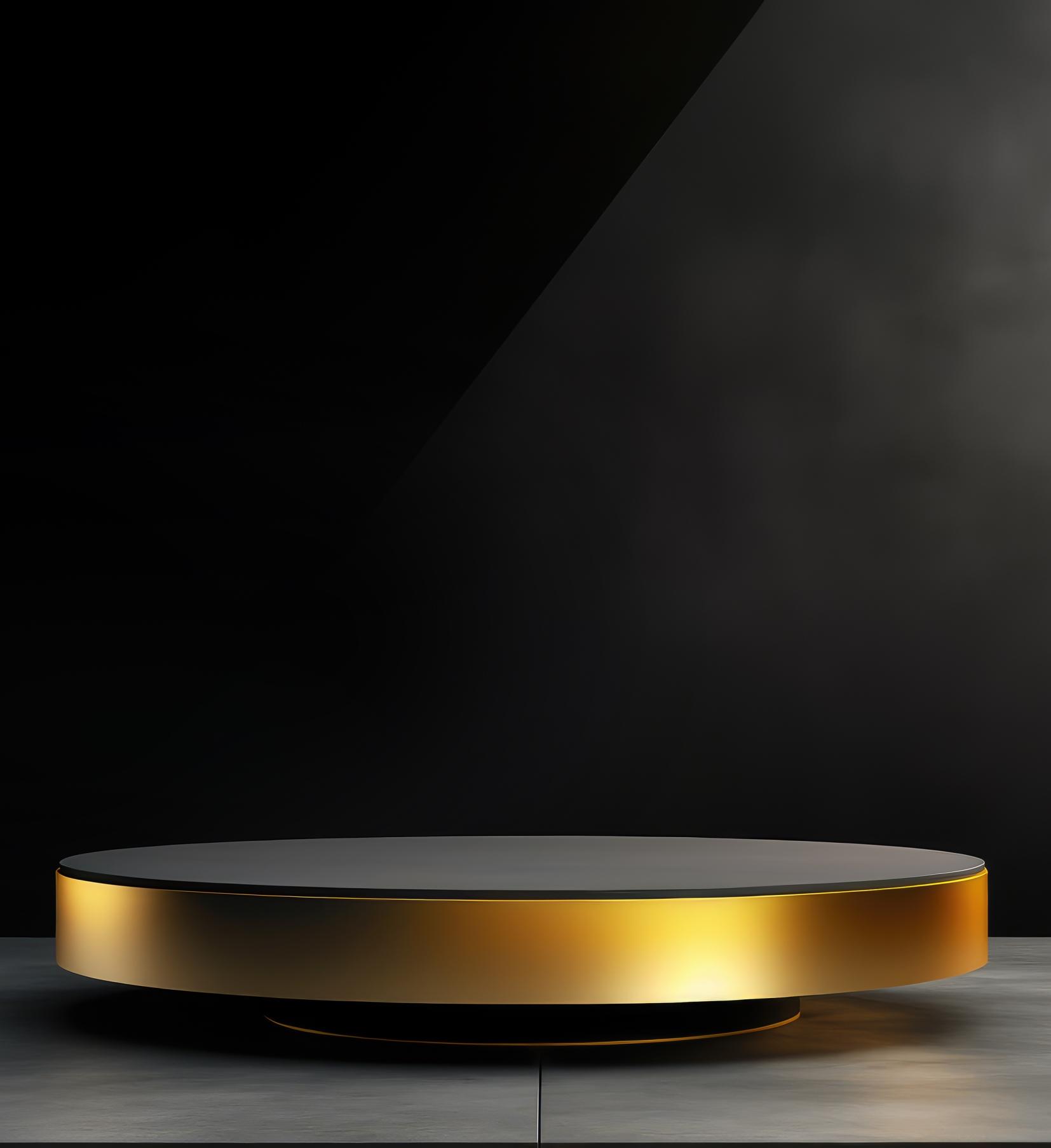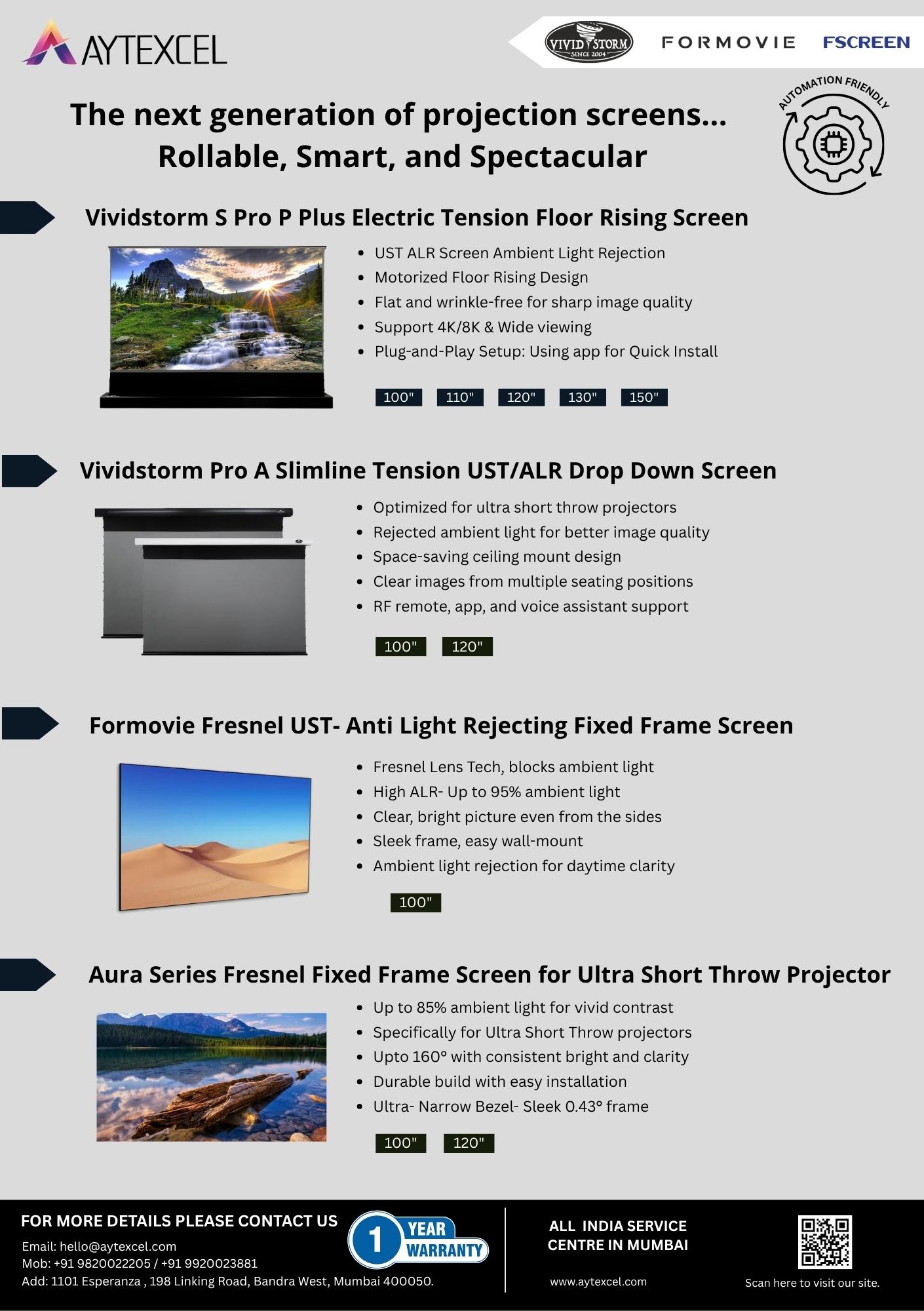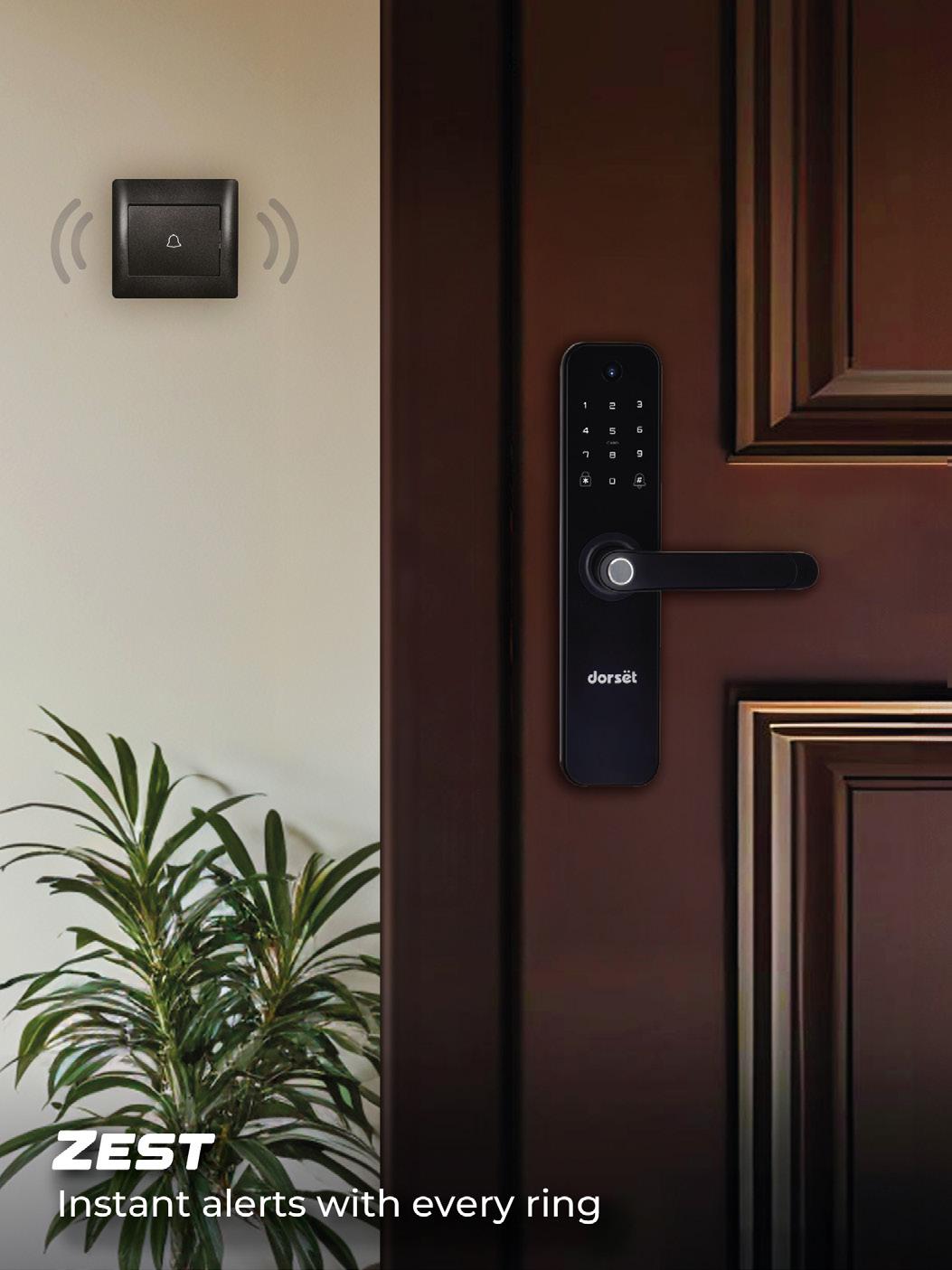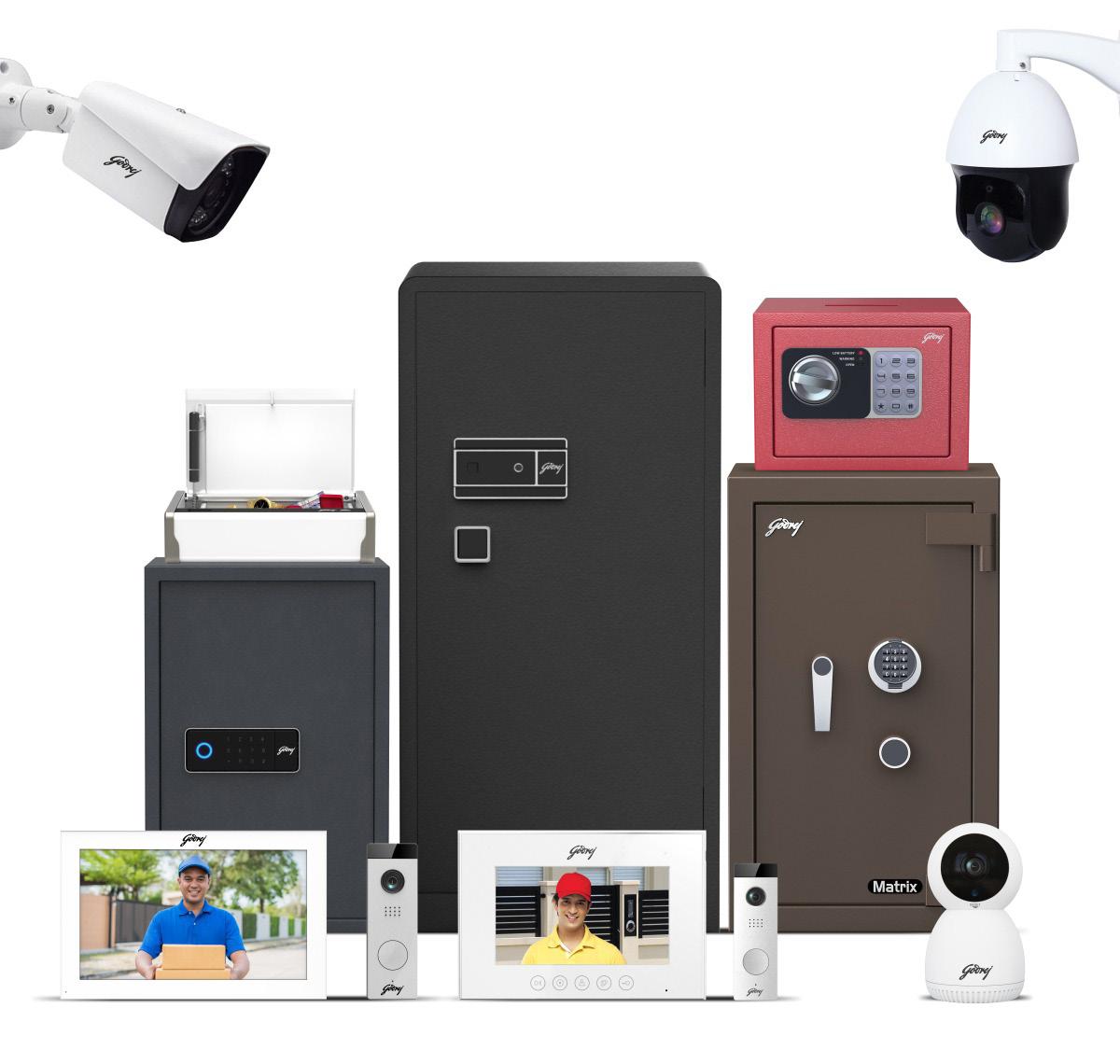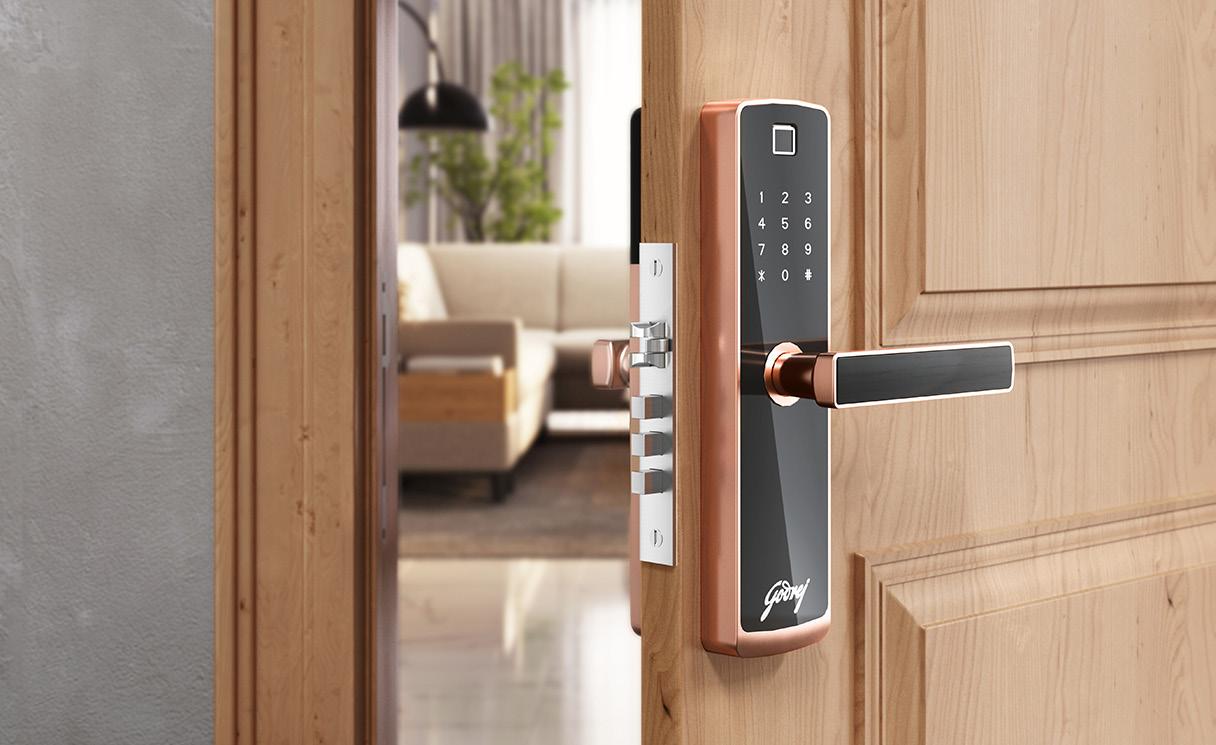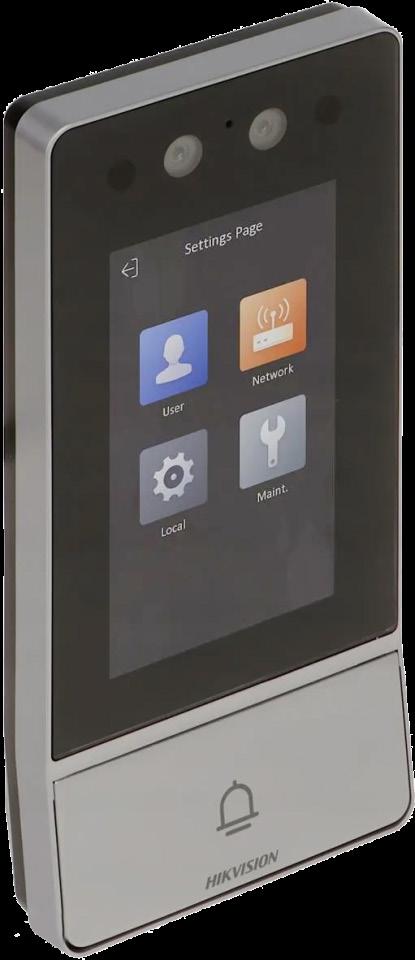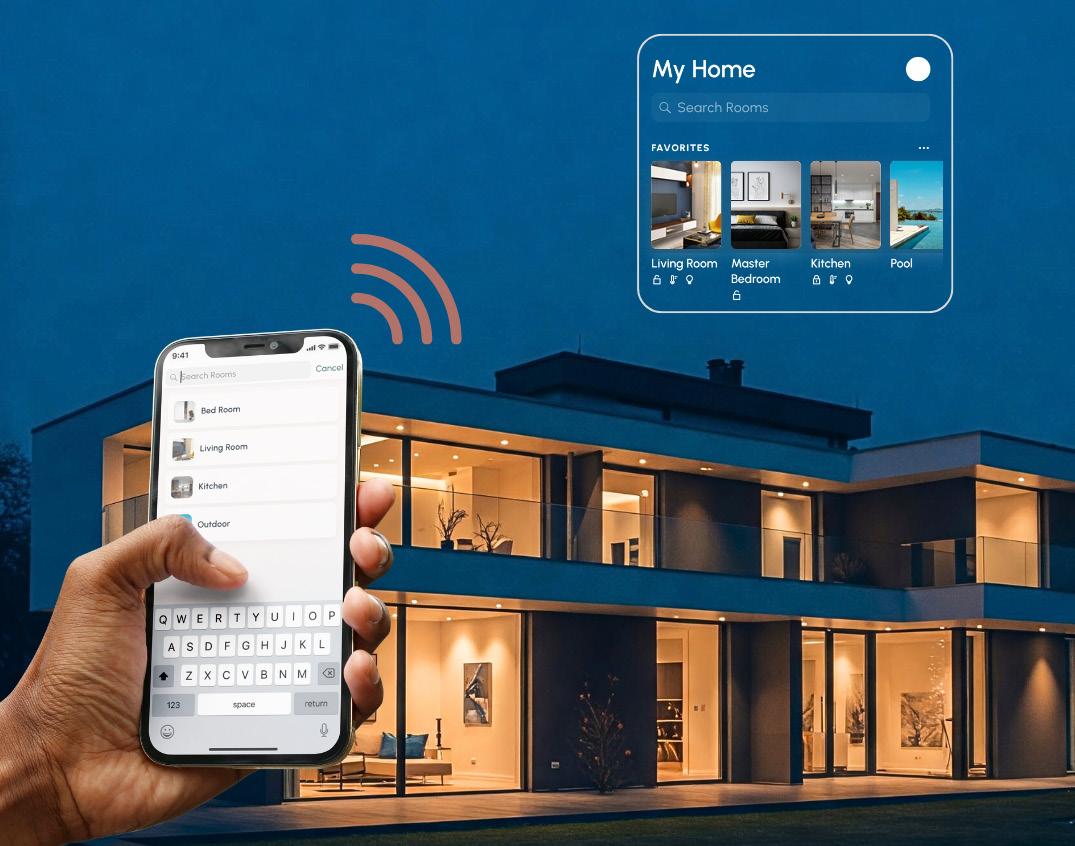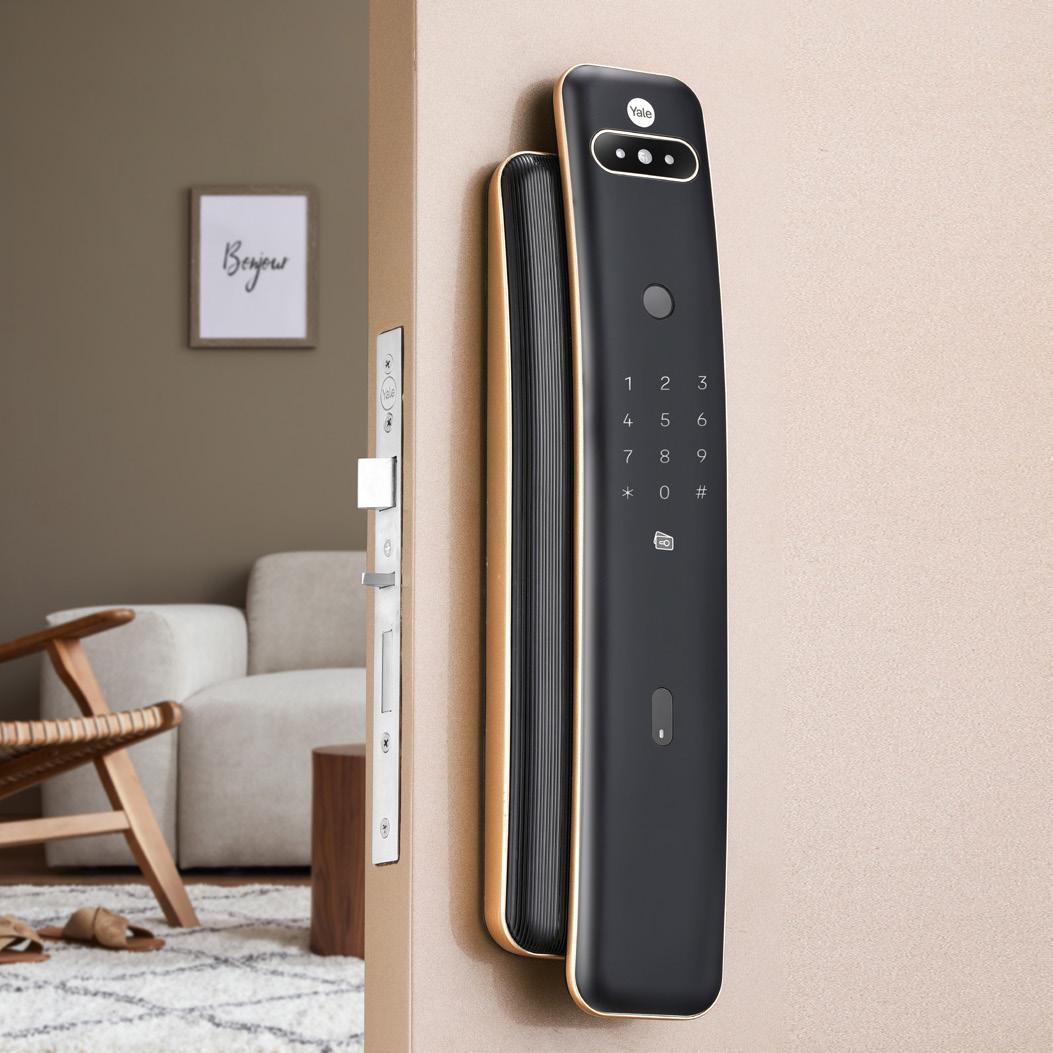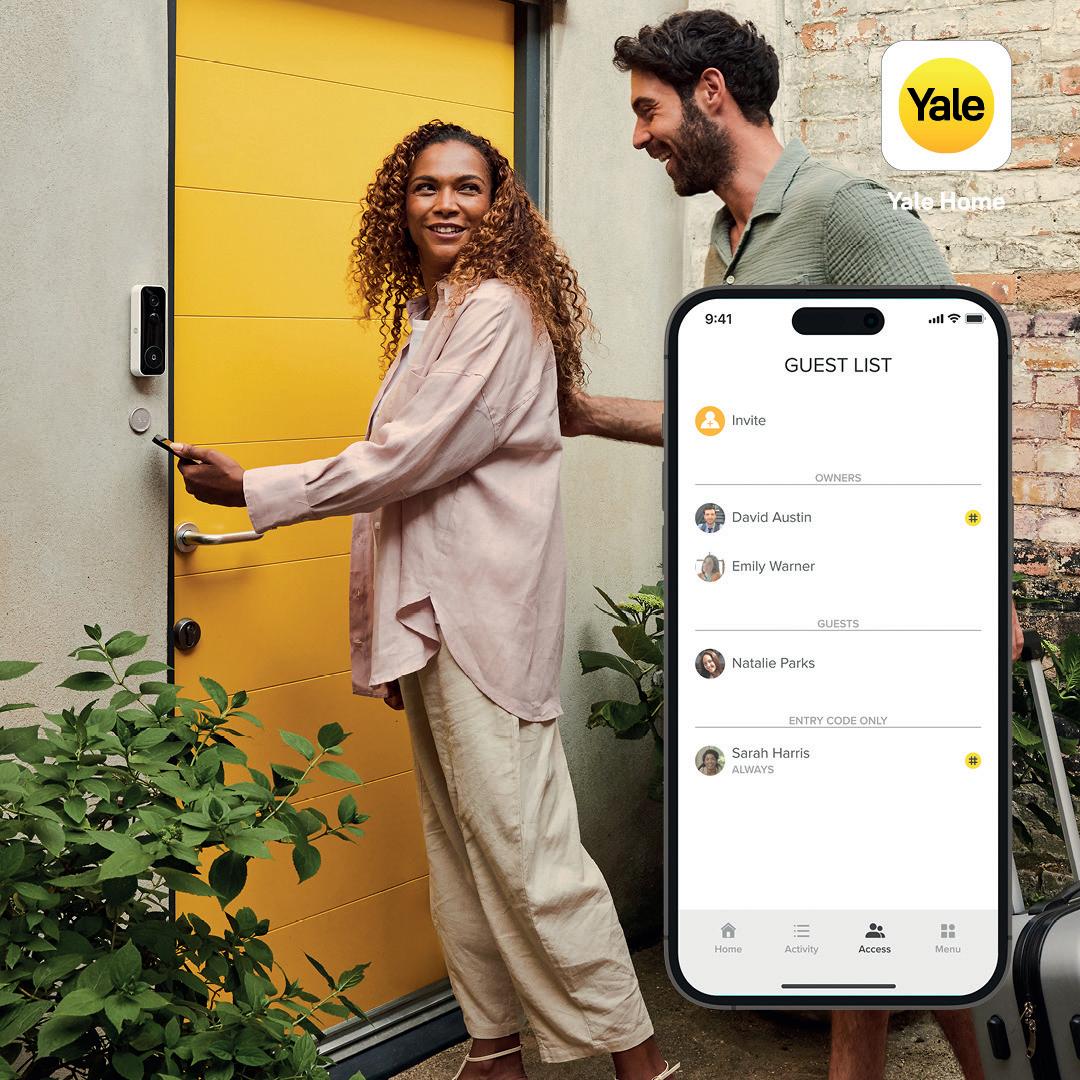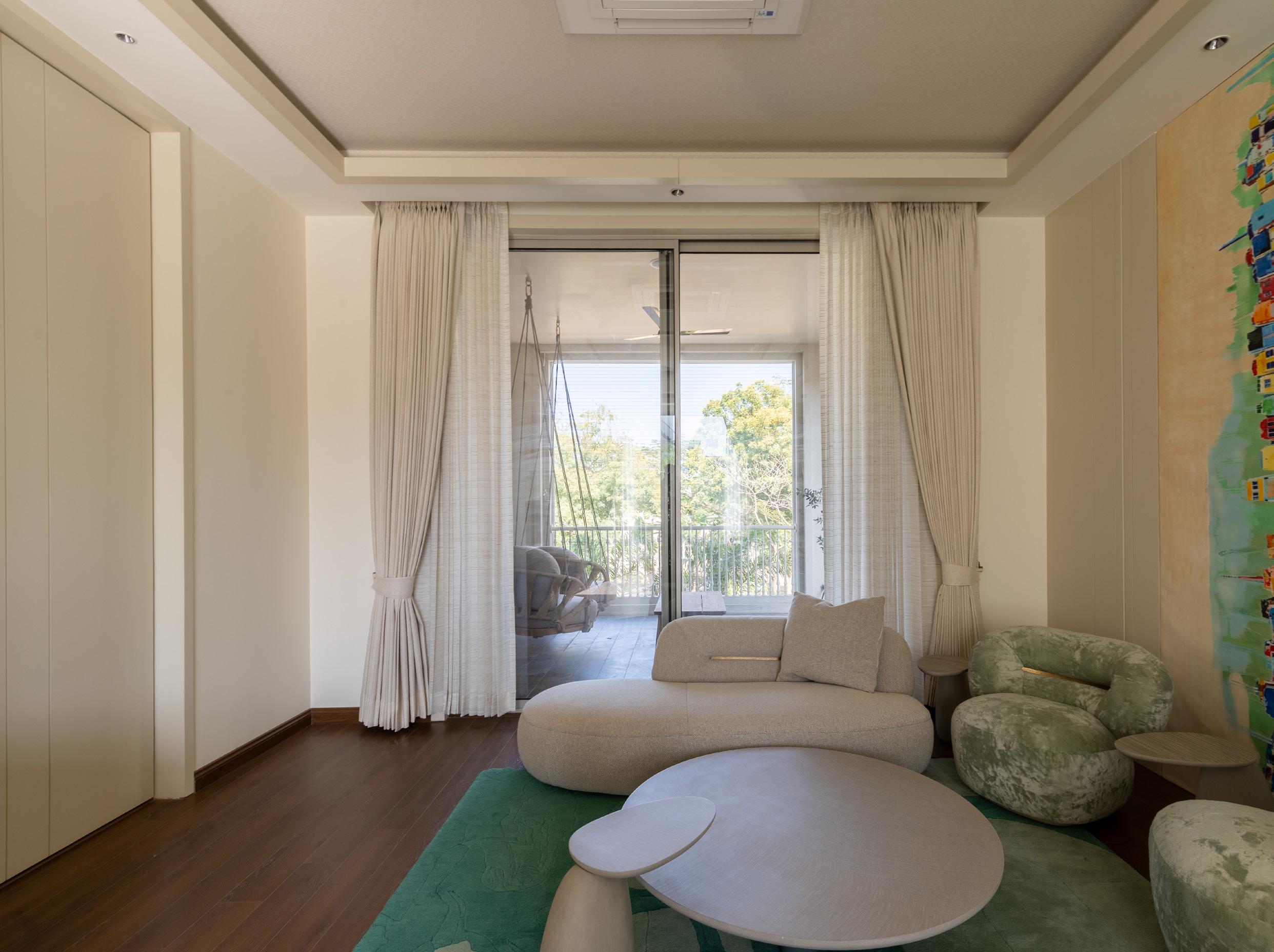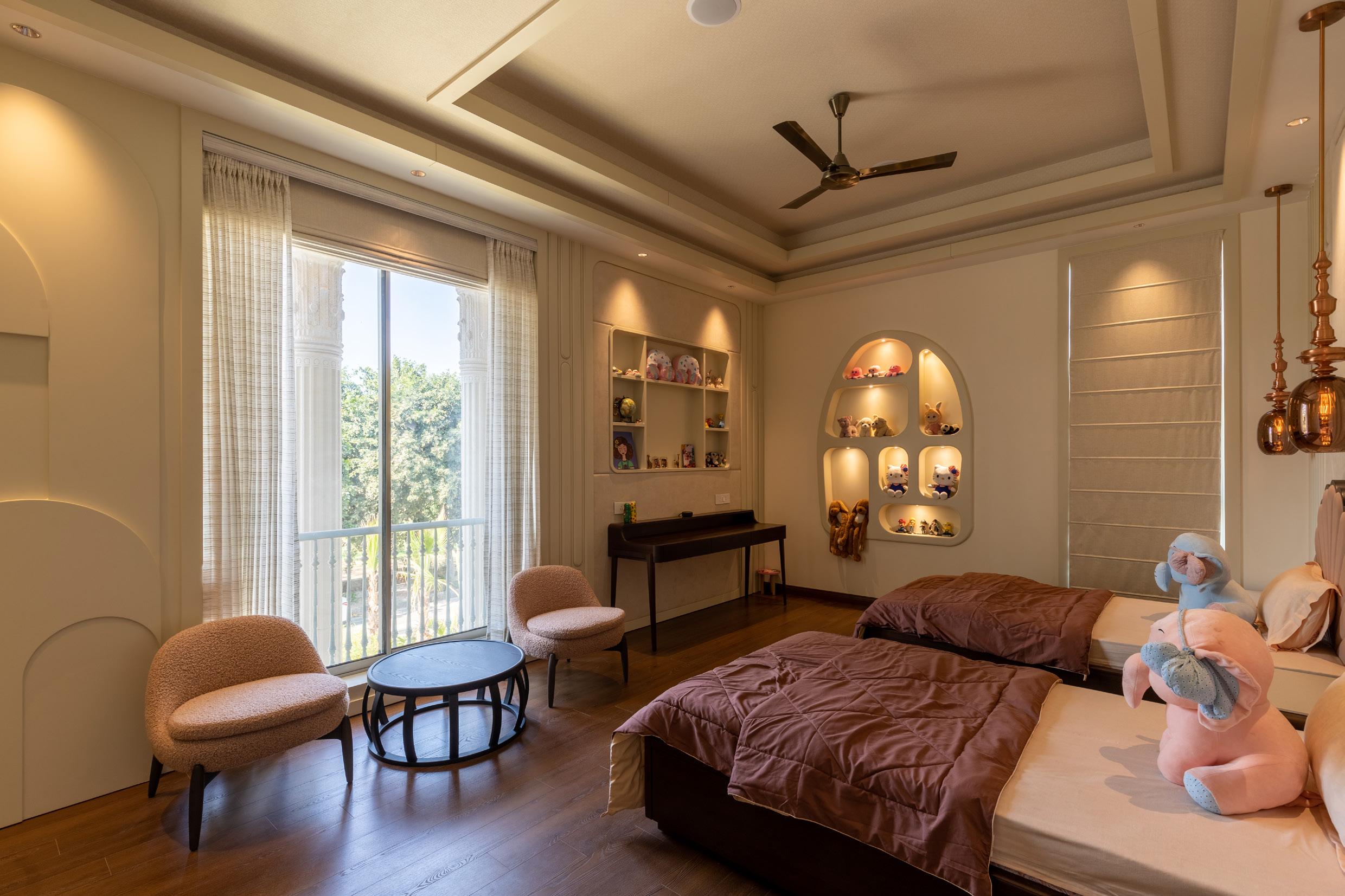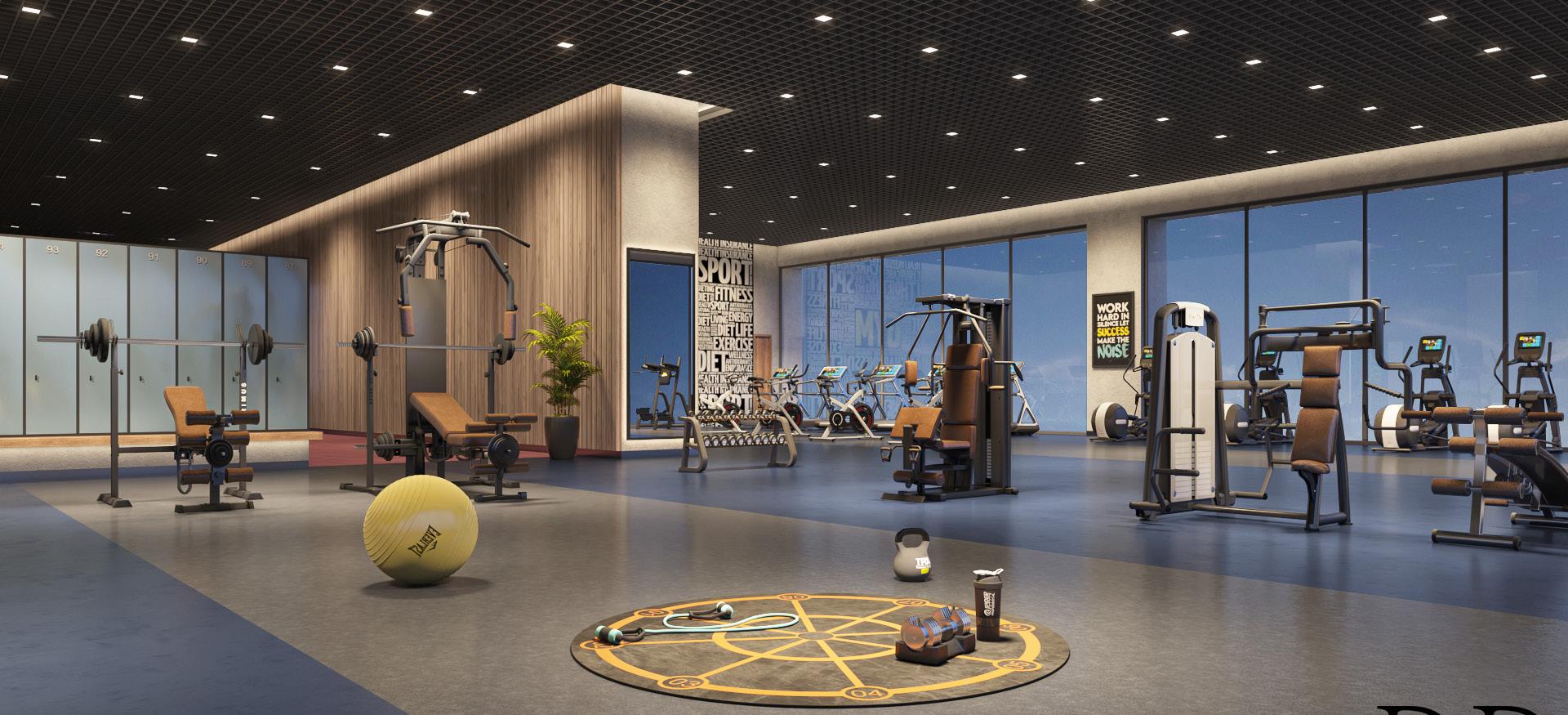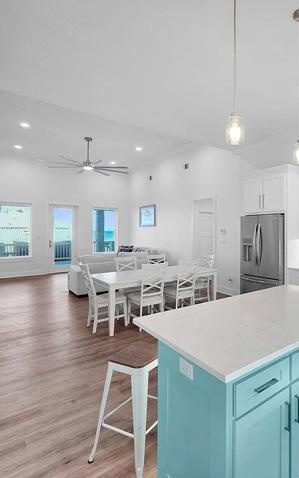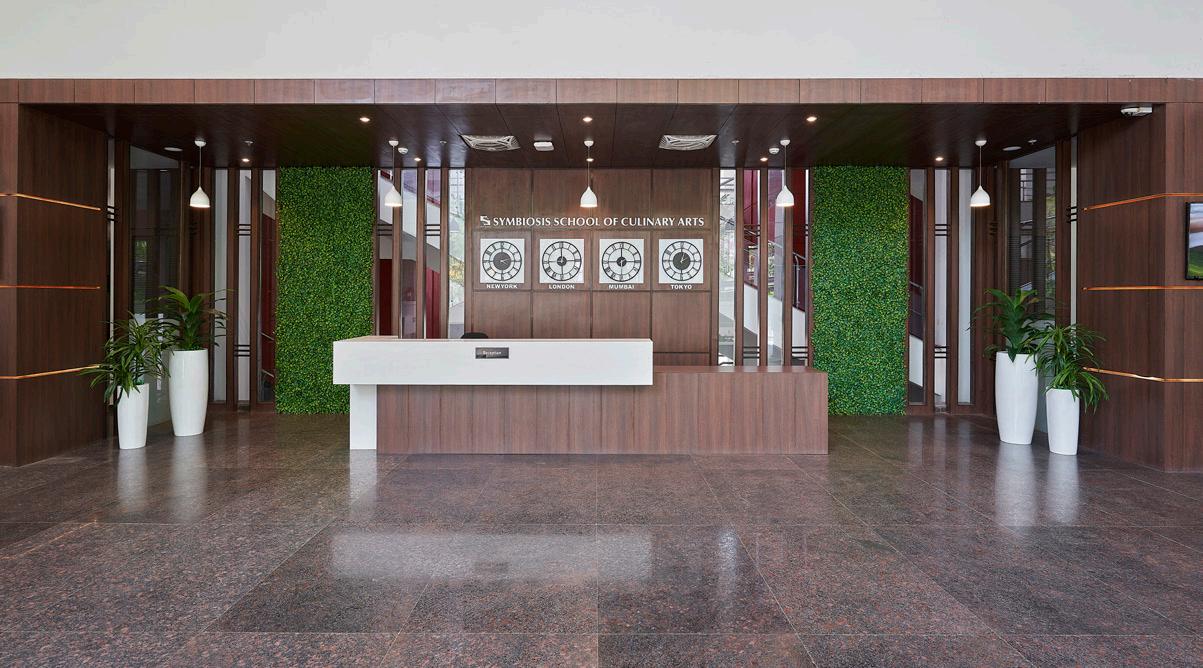The Role of Integrated Security in Luxury Home Automation
Security is no longer an add-on—Smart Home World shares expert insights and innovations that are making luxury homes smarter, safer, and more connected by integrating the latest security solutions in Luxury Homes.
India’s luxury housing market is in the midst of a technological renaissance. From sprawling villas in Bengaluru and Gurugram to premium bungalows in Pune and high-rise luxury apartments in Mumbai, Hyderabad, Chennai and Kolkata, affluent homeowners are embracing high-end security solutions.
With the luxury housing sector in India on a strong upward trajectory, the demand for advanced home security solutions has grown in parallel. As high-end villas, bungalows, and
premium apartments become increasingly connected, homeowners are prioritizing systems that combine cutting-edge protection with seamless automation. This surge reflects a broader shift—where security in luxury homes is no longer just about safeguarding property, but about delivering intelligent, integrated, and effortless peace of mind.
For a growing segment of tech-savvy homeowners, security integration has become an essential differentiator—combining
cutting-edge innovation with lifestyle convenience to deliver protection that is both invisible and reliable.
With home owners demanding uncompromising safety, ease of control, and a seamless digital experience, system integrators and developers are turning to next-generation technologies such as:
• Facial recognition systems that ensure access control is personalised, frictionless, and secure.
• Biometric and smart locks that replace traditional keys with high-precision authentication and multi-user access management.
• Real-time monitoring and remote access, allowing homeowners to oversee and control their properties from anywhere in
the world—an increasingly vital feature for NRIs and frequent travellers.
• AI-powered threat detection capable of identifying unusual activity, reducing false alarms, and initiating automated safety protocols.
• Integrated surveillance within automation ecosystems, where cameras, motion sensors, and lighting systems work in sync to enhance both security and energy efficiency.
These technologies mark a decisive shift from reactive security to predictive intelligence. By leveraging AI, IoT connectivity, and automation, today’s integrated systems can learn household patterns, detect anomalies, and respond autonomously—whether by activating perimeter lights, securing doors, or alerting security personnel in real time.
Smart Home World engages with experts from across various industries to gain valuable insights into the evolving role of integrated security in luxury home automation. These thought leaders share how intelligent, connected solutions are redefining safety, convenience, and luxury in today’s premium residences.
Please share details of your security solutions most suited for luxury homes (facial recognition, smart locks, surveillance, AI monitoring, etc.).
Luxury homes demand more than just protection - they demand intelligence wrapped in elegance. Our portfolio for premium residences includes an ecosystem of AI-powered surveillance cameras, humanbody detection systems, and smart locks that blend technology with sophistication.
From STQC-Certified Network cameras offering dual-light illumination and twoway talk features to government-approved and cybersecured ezyKam+ Wi-Fi cameras designed for aesthetic home environments, every product is engineered to ensure both discretion and dependability. Our smart door locks bring a sense of futuristic security with fingerprint, PIN, and app-based access, while AI monitoring technologies ensure that every movement, sound, and anomaly is analysed in real time. Together, they create a silent yet vigilant guardian for modern luxury spaces.
How do you ensure convenience, personalisation, and ease of use for high-networth homeowners?
For us, convenience is not an add-on; it’s a design philosophy. Our systems are crafted for homeowners who value time, comfort, and simplicity. With intuitive mobile control via the CP PLUS ezyKam+ and ezyLiv apps, users can monitor, manage, and modify their home’s security setup from anywhere in the world.
AI personalization enables the system to adapt to user behavior, detect the human body effectively to reduce false alarms, and even adjust surveillance parameters automatically. For high-net-worth individuals with multiple properties, our multisite remote monitoring allows a unified view of every residence through a single dashboard, merging sophistication with seamless control.
Do your solutions incorporate AI for predictive threat detection, behavior analysis, or automated alerts? Please elaborate.
Absolutely. AI forms the core of our nextgeneration security solutions. Our systems are equipped with smart video analytics capable of recognizing human and vehicle movement, identifying behavioral anomalies, and issuing automated alerts before potential threats escalate.
Aditya Khemka Managing Director, CP PLUS (Aditya Infotech Limited)
Technologies such as AI-Instastream optimize video transmission while maintaining clarity, ensuring not just smarter but also more efficient security management. The AI engine learns from patterns - distinguishing between normal and suspicious behavior, predicting potential breaches, and triggering realtime notifications for proactive action. This transforms surveillance from a reactive tool into a predictive safeguard.
Since luxury homes prioritize both form and function, how do your Products align with premium interior aesthetics?
In luxury spaces, every element must complement the architecture. Our design philosophy embraces this principle, ensuring security blends seamlessly with style. CP PLUS cameras and smart devices feature minimalist, refined aesthetics with sleek contours, matte finishes, and compact designs that sit gracefully within modern interiors.
Whether integrated into a marble-clad living room or a minimalist smart villa, our devices maintain visual harmony without compromising performance. Moreover, discreet installations allow our technology to enhance the ambiance rather than intrude upon it, because true luxury is defined by balance between beauty and intelligence.
Could you share one or two examples of your products installed in luxury residences?
Our solutions have been chosen by some of India’s most discerning homeowners, from high-end penthouses in Delhi NCR to smart villas in Hyderabad and Bengaluru. In one such premium residence, we integrated facial recognition access control with AI-powered perimeter surveillance, allowing homeowners to manage entry permissions remotely and receive instant visitor notifications.
In another installation, IlluMax cameras were synchronized with mood-based lighting and voice commands, giving residents handsfree control and real-time visual assurance. Each deployment underscores how CP PLUS technologies adapt to the lifestyle and aesthetic expectations of luxury homeowners
- quietly powerful, elegantly present.
What trends in integrated home security do you foresee shaping the luxury segment over the next 3–5 years?
The next wave of luxury home security will be defined by context-aware intelligence and deep personalization. AI will evolve from identifying threats to anticipating homeowner needs, learning behavioral patterns, and finetuning environmental responses.
We foresee seamless integration of surveillance, access, lighting, and climate system -all governed by unified, AI-based control hubs. Privacy-focused design will also take center stage, ensuring data protection without sacrificing convenience.
CP PLUS is already preparing for this future through innovations in compression, resolution, IoT compatibility, and cybersecured architectures, ensuring that as homes grow smarter, their security grows stronger, subtler, and more intuitive.
I would like to conclude saying, at CP PLUS, luxury security isn’t just about fortifying walls; it’s about curating peace of mind through innovation, intelligence, and impeccable design. As India’s most trusted security brand, we continue to craft experiences where technology protects quietly, learns intelligently, and lives beautifully.
Please share details of your security solutions most suited for luxury homes (facial recognition, smart locks, surveillance, AI monitoring, etc.).
Dorset offers advanced smart locks designed for modern living. The range includes F-Lux, a unique hybrid that combines the timeless elegance of mechanical locks with cuttingedge digital functionality, and DG204 Pro, which integrates the doorbell with the lock to deliver instant notifications. As pioneers in access innovation, we introduced features such as video doorbell integration, palm recognition, and AI-driven lock monitoring through surveillance, setting new benchmarks in smart home security. Together, these solutions offer homeowners unmatched safety, convenience, and style.
How do your products integrate with popular home automation platforms (e.g., Crestron, Control4, KNX, Savant)?
Our smart locks work seamlessly with leading automation systems such as Hoggar, Schneider, and Panasonic. Using RF technology with a Receiver & Transmitter set, the locks can be synced with home automation networks for unified access. This enables remote locking, unlocking, and monitoring through a single interface.
How do you ensure convenience, personalisation, and ease of use for high-networth homeowners?
Every solution is designed for intuitive operation and tailored to individual lifestyles. Homeowners benefit from multiple access options, customizable settings, and real-time notifications through the connected app. With the global launch of F-Lux, we are now bringing digital locks to internal doors in India for the first time, combining smart technology with elegant design to ensure that even interior doors are secure, convenient, and seamlessly integrated into luxury homes.
Do your solutions incorporate AI for predictive threat detection, behaviour analysis, or automated alerts? Please elaborate.
Yes—our solutions use AI for predictive threat detection, behaviour analysis, and automated alerts, ensuring smarter and faster protection. The system analyses patterns from surveillance and motion data to detect unusual activity—
Saurabh Bansal
Joint Managing Director, Dorset Industries Private Limited
like loitering near entry points at odd hours— and sends context-aware alerts to the homeowner. Real-time notifications, complete with video clips or snapshots, are delivered via mobile apps, smartwatches, or voice assistants for instant response.
Since luxury homes prioritise both form and function, how do your products align with premium interior aesthetics?
Dorset products reflect a balance of form, finish, and function. Sleek lines, minimal profiles, and premium finishes like rose gold, matte black, and antique brass complement high-end interiors. Each piece is crafted to blend technology seamlessly into design.
Could you share one or two examples of your products installed in luxury residences?
Our smart locking and access solutions are installed across premium residences and hospitality projects, including luxury developments by Rustomjee. They enhance convenience while maintaining the design integrity of each space. Every project reflects our commitment to secure, stylish living.
What trends in integrated home security do you foresee shaping the luxury segment over the next 3–5 years?
The coming years will see greater integration of AI, voice assistance, and predictive analytics in smart home security. Hybrid systems that fuse mechanical craftsmanship with digital intelligence will define the next phase. Dorset continues to innovate for homes that are secure, intuitive, and beautifully connected.
Please share details of your security solutions most suited for luxury homes (facial recognition, smart locks, surveillance, AI monitoring, etc.).
Godrej Enterprises Group’s Security Solutions portfolio is designed to meet the evolving needs of luxury homeowners who value both functionality and refined aesthetics. Our approach focuses on multi-layered ecosystems that seamlessly integrate access control, asset protection, and monitoring.
Our offerings include advanced home lockers with contemporary designs, such as the NX Pro Luxe, featuring dual locking mechanisms that complement modern Indian homes. Additionally, our premium range of home lockers comes with triple locking mechanisms, allowing multiple generations of a family to access valuables conveniently.
To simplify visitor management, we provide a comprehensive range of video door phones, with the SeeThru Pro Nova standing out. Its 10” screen offers enhanced visual clarity and modern connectivity, elevating luxury home access management.
Aligned with global trends, our solutions also incorporate biometric smart locks, facial recognition, and AI-powered monitoring, delivering unmatched convenience, security, and peace of mind.
Do your solutions incorporate AI for predictive threat detection, behaviour analysis, or automated alerts?
Our solutions are already equipped with intelligent motion detection, and we’re actively looking to evolve toward predictive capabilities.
OurWifi Home Cameras are designed with humanoid detection technology that identifies human movement, sends real-time alerts to mobile devices, and automatically triggers motion-based recording.
This ensures that homeowners receive relevant notifications only when actual human activity is detected—greatly minimizing false alarms. Our Smart Lockers feature an iBuzz alarm system that instantly alerts users in case of intrusion. Looking ahead, we see AI evolving toward contextual intelligence—analyzing factors like time, frequency, and user identity to deliver proactive and adaptive security. In the near future, Generative AI will further enhance our Video Door Phones (VDPs) by recognizing familiar faces or frequent visitors, enabling personalized alerts and greetings. While the industry is still in the early stages of GenAI adoption, our focus remains on responsible innovation—ensuring every advancement is tailored to real-world Indian conditions and customer needs.
How do your products align with premium interior aesthetics?
In luxury residences, security solutions must blend seamlessly with interior aesthetics while maintaining robust functionality. Our NX Pro Luxe digital lockers, equipped with a dual-locking mechanism, feature soft edges, leather interiors, and refined finishes that complement modern wardrobes and private offices. For those who prioritize strength without compromising design, our Matrix Home Lockers offer a perfect balance— combining heavy-duty construction (250x stronger than wooden cupboards) with a premium, elegant appearance. In the electronic home security category, our SeeThru Pro Nova White Video Door Phone embodies a design-first philosophy. Its slim frame, clean lines, and 10-inch surface screen create a sleek, contemporary look that enhances luxury interiors. Available in white color variant it offers a premium fit and finish, while
Pushkar Gokhale
Business Head, Security Solutions Business of Godrej Enterprises Group
its intuitive touch interface and advanced GUI ensure the experience feels as refined as it looks. Together, these innovations reflect our commitment to creating security solutions that elevate, rather than interrupt, the visual harmony of premium homes.
Could you share examples of your products installed in luxury residences?
Our solutions are extensively adopted in premium homes where both discretion and high performance are paramount. Our Matrix Home Lockers are commonly installed in personal spaces to safeguard heirlooms, collectibles, and luxury watches, offering enhanced burglary resistance for high-value possessions. Meanwhile, personal lockers like Verge are preferred in living areas for securing everyday valuables such as watches, keys, and wallets—ensuring easy access with an elegant design. In the domain of electronic security, our Video Door Phones are a popular choice in villas and upscale apartments, serving as a stylish yet secure first line of access management. Similarly, our Wi-Fi Video Door Phones and Wi-Fi Home Cameras have gained strong traction among luxury homeowners for their advanced connectivity, intelligent features, and seamless integration with modern lifestyles.
What trends in integrated home security do you foresee shaping the luxury segment over the next 3–5 years?
The luxury home security market is evolving rapidly. Over the next three to five years, AIdriven predictive security will dominate, with systems learning occupant routines, identifying anomalies, and escalating threats in real time. Deeper integration across platforms will become the norm, ensuring lockers, access devices, and entry systems communicate seamlessly with broader smart home ecosystems.
Touchless and contactless solutions will continue gaining ground, driven by preferences for hygiene and convenience. Design-first security devices will be in high demand, with products becoming slimmer, more discreet, and customizable to blend into luxury interiors. A defining shift will be the convergence of security products, with VDP, wifi cameras, and digital locks converging on the same application with AI-driven IFTTT logic becoming dominant.
Godrej’s roadmap aligns with these global shifts, combining technology, integration, and design to deliver security that is as intuitive as it is powerful.
Please share details of your safety solutions most suited for luxury homes.
For luxury homeowners, safety is expected to be seamless, it must integrate into the living experience rather than stand out as an external system. At Locks & Architectural Solutions (LAS), our Advantis portfolio is designed with this principle in mind. The Advantis Revolution is a 4-in-1 digital lock that offers fingerprint, RFID card, PIN and mechanical key access, with features like 360° fingerprint recognition, auto-deadbolt, privacy mode, low battery alerts and an emergency power option.
For homes that prioritise clean, minimal design, especially those with glass doors, the Advantis Crystal offers a sleek glass-touch interface with the same level of safety. Building on this foundation, our Advantis IoT9 which was launched last year, adds Wi-Fi and appbased management, remote access, and overthe-air updates, ensuring that homeowners can monitor and manage complete safety even when they are away.
Across the range, we ensure multiple access modes, reliable fail-safes and real-time alerts, giving residents both convenience and assurance without compromising on design or functionality.
How do your products integrate with popular home automation platforms (e.g., Crestron, Control4, KNX, Savant)?
Luxury homes are moving towards unified automation, where lighting, climate,
entertainment, and safety seamlessly work together. Our IoT-enabled locks are designed to integrate with leading platforms like Crestron, Control4, KNX, and Savant ensuring they become an active part of the broader smart home ecosystem.
Through dedicated gateways and middleware, our locks enable two-way communication, automation systems can not only issue commands but also read lock status, maintain audit trails, and trigger alerts. For example, unlocking a door can automatically switch on lights, adjust the air conditioning, or draw curtains to create a personalized welcome scene.
We work closely with system integrators to ensure smooth deployment, robust data security, and reliable interoperability. This makes our locks more than just standalone devices, they become a core element of the connected home experience.
How do you ensure convenience, personalization, and ease of use for high-networth homeowners?
For homeowners in the luxury segment, convenience is as important as safety. That is why our solutions offer multiple access modes, allowing residents to choose between biometric authentication, PINs, RFID cards, app-based access, or even traditional keys when needed.
Homeowners can personalise access through user profiles, giving family members, staff or guests specific credentials with defined time limits. For example, a guest can be provided a one-time PIN valid for the duration of their stay, while staff can be given restricted access only during working hours. All these permissions can be managed centrally through a mobile application, with the ability to revoke or update them instantly.
In addition, safeguards like mechanical overrides and emergency power options ensure that convenience is never disrupted, even during technical or power-related challenges. The design philosophy is simple make safety effortless to use while keeping full
Shyam Motwani
Business Head, Locks & Architectural Solutions, a business of Godrej Enterprises Group (GEG)
control in the homeowner’s hands.
Do your solutions incorporate AI for predictive threat detection, behaviour analysis, or automated alerts? Please elaborate.
AI is playing a key role in the way we are reimagining home safety. Our IoT locks and analytics layer use algorithms that can learn and adapt to the routines of a household. For instance, they recognise regular entry and exit patterns and can immediately flag unusual behaviour such as repeated failed access attempts or an entry at an unusual time. When paired with cameras and sensors, the AI further reduces false alarms by correlating multiple inputs before generating alerts.
These alerts can be graded in severity and linked to automated responses such as notifying the homeowner, activating surveillance cameras or locking specific zones. Over time, as the system gathers more data, its accuracy improves, making it more predictive. This shift from reactive safety to proactive safety is where we believe AI will make the biggest difference in the years to come.
Since luxury homes prioritize both form and
function, how do your products align with premium interior aesthetics?
In luxury projects, design and safety must work hand in hand. A lock cannot look out of place in a carefully designed interior. That is why our Advantis range is engineered with slim profiles, glass finishes and concealed hardware to complement modern architectural preferences. We also offer designer faceplates and customised finishes for projects where hardware needs to blend seamlessly with the chosen palette of materials.
By collaborating with architects and interior designers from the planning stage, we ensure that our solutions are not just technically sound but also aligned with the visual and functional language of the home.
Could you share one or two examples of your products installed in luxury residences?
In one luxury villa project, we implemented IoT-enabled Advantis lock integrated with the home automation system. This allowed residents to experience touchless arrival, where unlocking the main door automatically set the lighting, temperature and music to
their preferences. Guest access was managed through temporary codes, and all entries were logged in real time.
In another premium residence that featured frameless glass interiors, the Advantis Crystal was chosen to maintain the design continuity without adding bulky hardware. In this project, different access zones such as guest rooms, service quarters and recreational spaces were programmed with specific permissions to balance privacy and convenience. These examples reflect how our solutions adapt to the unique requirements of luxury homes.
What trends in integrated home safety do you foresee shaping the luxury segment over the next 3–5 years?
The next phase of home safety will be defined by four shifts. First, safety will become
predictive, with AI models identifying risks before they escalate. Second, safety hardware will become more discreet, integrated into doors and interiors without being visually prominent. Third, safety will no longer exist in isolation but converge with other aspects of home automation like energy management, wellness and environment control, all on a unified platform. And finally, there will be greater emphasis on 100% “Make in India” product that ensures complete privacy and resilience, with strong encryption, local data storage, failover modes and energy-efficient always-on devices.
At LAS, our investments are aligned to these trends, be it IoT, AI-driven analytics, System integrators partnerships or design-led product development. This is to continue to deliver solutions that combine safety, convenience and integration for the luxury homeowner.
Please share details of your security solutions most suited for luxury homes (facial recognition, smart locks, surveillance, AI monitoring, etc.).
These days, Smart Home projects are being planned and designed with key considerations focused on convenience, technology-driven innovations, and luxury. The Smart Home ecosystem is a technological marvel of numerous technologies, including AI, Machine Learning , AIoT, IoT, Robotics, Machine Vision, Automation, Control, Sensing, Monitoring, Lighting, energy Management, Security, Surveillance, Entertainment and Networking. AI and Machine Learning are playing a crucial role in enhancing threat detection and response. AI-powered security cameras with features like facial recognition and smart locks are becoming more popular. Enhanced AIoT protocols backed by stronger security measures are embedded in devices to protect against potential threats. These include improved encryption and authentication protocols. There is an uptick in the Robotic Assistants and Home Automation segment due to growing demand for these solutions.
Hikvision solutions are revolutionizing the smart home segment in several ways. Enhanced security and convenience are at the forefront of their innovations. Hikvision offers a comprehensive approach to security, incorporating value-added convenience, comfort, and reliability.
Some key features of Hikvision’s solutions for smart homes include:
Energy Optimization: AI-powered energy management systems that optimize energy consumption based on usage patterns.
Predictive Maintenance: AI-driven predictive maintenance alerts that detect potential issues before they occur.
Smart Automation: Automated control of lighting, temperature, and security systems for enhanced convenience and comfort.
Enhanced Security: AI-powered security systems that detect and respond to potential threats in real-time.
Overall, Hikvision’s solutions are transforming the smart home segment by providing homeowners with a seamless, convenient, and secure living experience.
How do your products integrate with popular home automation platforms (e.g., Crestron, Control4, KNX, Savant) to enable access control via API?
Hikvision smart home products integrate seamlessly with popular home automation platforms, enhancing the functionality and user convenience of their systems. Here’s a breakdown of the integration process:
Integration with Control4: Hikvision has partnered with Control4, a leading provider of automation and networking systems for homes and businesses. The integration allows users to control Hikvision devices, such as security cameras and door stations, using the Control4 interface. Integrating Hikvision with Control4 allows end-users and Smart Home Owners to control and monitor security cameras, NVRs, and access control systems directly from the Control4 interface. This is achieved by using a dedicated driver that provides features like live video, event monitoring, snapshots, and automated actions triggered by events, simplifying security management.
This enables features like:
Remote viewing: Users can view live footage from Hikvision cameras on their Control4 interface.
Ashish P. Dhakan
MD & CEO, Prama Hikvision India Private Limited
Motion detection alerts: Hikvision cameras can trigger alerts on the Control4 system, allowing users to respond promptly.
Door station control: Users can receive notifications and view live footage when someone is at the door, and even communicate with visitors remotely.
Integration with Home Assistant: Hikvision also integrates with Home Assistant, a popular home automation platform. This integration allows users to control Hikvision devices, such as door locks and video intercoms, using Home Assistant’s interface.
Control door locks: Users can unlock doors remotely using the Home Assistant interface. View live footage: Users can view live footage from Hikvision cameras on the Home Assistant interface.
The integration of Hikvision smart home products with popular home automation platforms offers several benefits, including:
Enhanced security: Users can monitor and control their homes more effectively, receiving alerts and notifications when suspicious activity is detected.
Increased convenience: Users can control multiple devices from a single interface,
making it easier to manage their smart home. Customization: Users can create custom automations and scenes, tailoring their smart home system to their specific needs. Other Integration Options: Hikvision also integrates with other popular home automation platforms, including Amazon Alexa and Google Assistant. This allows users to control Hikvision devices using voice commands, making it even more convenient to manage their smart home.
How do you ensure convenience, personalization, and ease of use for high-networth homeowners?
Hikvision’s Smart Home Product portfolio ensures convenience, personalization, and ease of use for high-net-worth homeowners through its advanced security solutions.
Smart Home Solutions: Hikvision offers integrated security systems, including video surveillance, access control, and smart home automation, tailored to individual homeowner needs.
AI-Powered Analytics: Utilizes artificial intelligence to provide real-time monitoring, alerts, and insights, enhancing security and convenience.
Customized Solutions: Provides bespoke
security solutions designed to meet specific homeowner requirements and preferences.
User-Friendly Interfaces: Features intuitive and easy-to-use interfaces for seamless control and monitoring of security systems.
Integration with Third-Party Systems: Enables integration with existing smart home systems and devices, ensuring a cohesive, personalized experience.
By leveraging these features, Hikvision’s Smart Home products deliver tailored security solutions that cater to the unique needs of high-net-worth homeowners, ensuring convenience, personalization, and ease of use.
Do your solutions incorporate AI for predictive threat detection, behaviour analysis, or automated alerts? Please elaborate.
Hikvision products and solutions do incorporate AI for predictive threat detection, behaviour analysis, and automated alerts. Their AI-powered analytics enable real-time monitoring, detecting subtle changes in
neural signals, and alerting surgical teams to potential complications.
Predictive Threat Detection: AI-driven algorithms detect potential security threats, reducing false positives and negatives.
Behaviour Analysis: Advanced analytics analyze behavior patterns, identifying suspicious activity.
Automated Alerts: Real-time alerts notify authorities of potential security breaches.
Their product range, including CCTV cameras and network video recorders, supports these features.
For instance, Hikvision camera offers motion detection and two-way audio, enhancing security and convenience.
Since luxury homes prioritize both form and function, how do your products align with premium interior aesthetics?
Hikvision’s products are designed to blend seamlessly with premium interior aesthetics, prioritizing both form and function. Their security cameras and systems are crafted with sleek, modern designs that complement luxury homes’ sophisticated interiors. The key features include following offerings for Smart Home segment.
The discreet design of Hikvision Smart Home products are Compact and stylish cameras, sleekly designed Face Recognition Terminals, Video Door Phones. These products blend into surroundings. The high-quality Materials used in Hikvision Smart Home products makes them durable. They offer customizable solutions, the tailored security systems to meet individual homeowner needs. By combining functionality with premium aesthetics, Hikvision’s products enhance luxury homes’ security and sophistication.
Could you share one or two examples of your products installed in luxury residences?
Hikvision’s Face Recognition Terminals and Video Door Phones suitable for luxury residences among other wide range of video
security, access control and intrusion alarm products and solution.
Hikvision DS-K1T671MF is a face recognition terminal with a 7-inch LCD touch screen, 2 MP wide-angle lens, and built-in M1 card reading module. It supports face recognition distance of 0.3m to 3m, with an accuracy rate of ≥99%.
Hikvision DS-K1T342MWX-E1 is a face recognition terminal with a 4.3-inch LCD touch screen, 2 MP wide-angle lens, and builtin M1 card reading module. It supports face recognition distance of 0.3m to 1.5m, with an accuracy rate of ≥99%.
Hikvision Video Door Phone is an IP-based video intercom solution that supports up to 500 indoor stations, allowing residents to check visitor identities and unlock doors using HD video calls.
These products offer advanced security features, sleek designs, and user-friendly interfaces, making them suitable for luxury residences.
What trends in integrated home security do you foresee shaping the luxury segment over the next 3–5 years?
Over the next 3-5 years, several trends in integrated home security are expected to shape the luxury segment. Some of these trends are already fast growing phenomenon in the Indian Smart Home market.
AI-Powered Threat Detection: Advanced AI algorithms will analyze security footage in real-time, distinguishing between normal activity and potential threats, and learning from patterns to recognize familiar faces and pets.
Biometric Access Controls: Facial recognition, fingerprint scanning, and voice authentication will become increasingly popular, providing seamless and secure entry to homes.
Smart Home Integration: Luxury homes will feature comprehensive automation of household chores and daily routines, with smart devices communicating with each other to optimize functions.
Cybersecurity: Advanced features will be built into systems controllers and infrastructure to protect users’ personal data and prevent hacking.
Sustainability: Smart home systems will prioritize energy efficiency, reducing waste and minimizing environmental impact.
Voice-Activated Controls: Voice assistants will evolve into context-aware systems that anticipate needs without manual input.
Predictive Maintenance: Smart homes will incorporate advanced monitoring systems, allowing remote control of devices and providing real-time analytics for preventive maintenance.
In India, the luxury residential market is already witnessing a surge in demand for smart homes with innovative technology features like voiceactivated controls, automated lighting, and temperature control.
Can you walk us through CasaDigi’s product portfolio and how it integrates with various security devices?
At its core, CasaDigi is a central smart home automation platform that brings together lighting, climate, entertainment, and security under one seamless interface. The platform includes modules for lighting, HVAC and curtain control, AV integration, and personalised preset experiences, all managed through intuitive touch panels, mobile devices, or voice assistants.
When it comes to security, CasaDigi doesn’t work in isolation; it acts as the command centre for a home’s safety infrastructure. Our platform integrates effortlessly with a wide range of third-party devices such as surveillance cameras, video door stations, motion sensors, intrusion alarms, and smart locks. Homeowners can monitor live camera feeds, receive alerts, or trigger predefined scenes, for instance, locking doors, turning on pathway lights, and arming the alarm — all from the same CasaDigi interface.
The idea is to simplify complex security ecosystems into a single, elegant layer of control that aligns with the home’s architecture and the user’s habits, ensuring safety feels intuitive, not intrusive.
How does CasaDigi’s system work with fire alarms, digital locks, and CCTV cameras?
CasaDigi is designed to integrate seamlessly with a wide range of safety and surveillance
devices, allowing users to monitor, receive alerts, and respond through a single unified interface. Fire alarms and digital locks can trigger automated responses or scene settings, while CCTV camera feeds can be viewed directly within the same control environment. For digital locks, CasaDigi can send notifications if a door is unlocked beyond a desired time or during night hours. New locks can also be configured with fingerprint access, and scenes or presets can be activated based on the specific person who unlocks the door, adding a personalised layer of security and convenience.
What are some of the key features and benefits of using CasaDigi’s smart home security solutions?
We offer centralised control, real-time alerts, and seamless integration across multiple devices, all while maintaining a designsensitive user experience. The platform enhances safety through automation, reduces manual intervention, and provides homeowners with peace of mind through easy access and control.
Muskan Salgia
Vice President, CasaDigi
Which security devices and protocols does CasaDigi support (e.g., ONVIF, RTSP, etc.)?
CasaDigi supports a wide range of industrystandard security protocols and third-party integrations to ensure flexibility across multiple brands and device types. This includes cameras, digital locks, and other smart security devices from brands such as Panasonic, Samsung, Vicom, Yale, and Hikvision.
CasaDigi works with standard protocols like RTSP and ONVIF, enabling seamless integration of CCTV feeds and smart locks. For digital access, security devices can be managed through CasaDigi’s e-Key system, allowing users to monitor activity, receive alerts, and control access from a single unified interface.
Can CaseDigi integrate with other smart home devices and systems (e.g., Amazon
Alexa, Google Home, etc.
No, CasaDigi functions as a comprehensive automation platform in itself; it directly integrates with devices across lighting, climate, AV, and security categories.
What measures does Casa Digi take to ensure the security and privacy of user data?
CasaDigi is trusted by HNI and ultra-HNI clients for its uncompromising approach to security and privacy. The platform adheres to the highest industry standards, with infrastructure audited and certified by thirdparty security experts every 12 months. All systems undergo rigorous testing, and strict internal practices ensure user data is never sold or shared. We combine cutting-edge technology with meticulous protocols, giving clients full confidence in the safety and privacy of their home and information.
Which security features (smart locks, access panels and camera’s) are most requested by your luxury home clients?
At Azure Interiors, our clientele in the luxury segment increasingly prioritises advanced security that balances convenience, discretion, and peace of mind. Smart locks and biometric access systems top the list, as homeowners appreciate the ability to control entry seamlessly through personalised codes, fingerprints, or mobile devices. Integrated surveillance systems, particularly high-definition cameras with remote monitoring capabilities, are also highly sought after. Clients often request layered solutions that include motion detectors, alarm systems, and video doorbells that allow for real-time communication with visitors. Beyond physical safety, there is also growing interest in environmental sensors –smoke, gas, and water leak detectors – that safeguard the home holistically. The demand is less about standalone gadgets and more about having a comprehensive ecosystem that works intuitively in the background.
How do you ensure security systems are integrated discreetly without disrupting the interior aesthetics?
Luxury homes are as much about beauty and ambience as they are about function, which is why discretion plays a crucial role in how security is implemented. Our approach at Azure Interiors is to treat technology as an extension of the design narrative. This means selecting hardware and panels with sleek finishes that
blend with the material palette, embedding cameras in architectural details, or concealing wiring and sensors within joinery. We often collaborate with automation experts early in the design process to map out placements that preserve clean lines and uncluttered spaces. For example, access panels can be customized to match wall finishes, while cameras may be recessed within ceiling coves or integrated into light fixtures. The goal is for security systems to be felt and experienced by the homeowner, but rarely seen as visual distractions.
Looking ahead, what design-friendly security innovations like invisible sensors, sleek panels, etc., do you see shaping the luxury segment?
The future of luxury home security lies in seamless invisibility paired with intuitive intelligence. We are already witnessing the rise of ultra-slim touch panels that almost disappear into walls, as well as invisible sensors embedded in ceilings and flooring. Facial recognition technology is also becoming more refined, with discreet devices capable of blending into doorframes or entry portals. Another exciting innovation is smart glass, which can shift from transparent to opaque for privacy, doubling as both a security and design feature. At Azure Interiors, we anticipate that artificial intelligence will further personalise security, learning behavioural patterns to predict and pre-empt risks, all while operating silently in the background. Importantly, these innovations are no longer just about protection; they are about creating secure environments that uphold the elegance and fluidity of luxury living.
Rashi Bothra and Ruchi Gehani Founders and Interior Designers, Azure Interiors
Yale has been synonymous with trust and innovation in home security. We take a look at the brand’s offerings that bring seamless protection and intelligent design to luxury homes.
The luxury smart home security market is set for rapid growth, with the home automation segment expected to expand exponentially. Consumers increasingly seek convenience, seamless interoperability, and intelligent systems that anticipate their needs. The widespread adoption of AI, while managed carefully for privacy, will enhance predictive maintenance and personalised experiences.
Yale’s focus on user privacy and integration readiness positions it well to meet these evolving demands. For homeowners and stakeholders, this means smart security will become more intuitive, user-centric, and indispensable in luxury living. It’s always better to be ahead of the curve and prepared for it, rather than being pushed around by it.
Get ready for luxury living. Get ready with Yale. Yale offers a vast range of security solutions perfectly suited for luxury homes. The portfolio includes everything one might need for a complete home security solution from advanced smart locks like Luna Pro+, Kyra, and
Elite to integrated surveillance, such as video doorbells and cameras in a smart ecosystem, the Yale Smart Home Ecosystem. The smart locks incorporate biometric facial recognition and PIN access, ensuring that only authorised users have access. Surveillance products offer real-time monitoring with high-definition video and instant alerts, giving homeowners peace of mind.
The Yale Home app is built with security at its core, ensuring that every interaction with your
smart home remains private and protected. Advanced two-factor authentication verifies your identity before granting access. If your phone is lost or stolen, you can easily revoke access to your devices via the web interface. All data and commands are encrypted end-toend, preventing unauthorised interference or breaches. With Yale, your convenience never comes at the cost of safety
These features create a secure, convenient entry and monitoring experience. This means
homeowners enjoy a safer environment without sacrificing elegance or ease of use, while project developers and facility managers appreciate reliable, durable, and scalable tech that integrates smoothly into smart home setups.
Yale products integrate effortlessly with popular home automation platforms through cloud-to-cloud connections and protocols like Zigbee and Z-Wave. This interoperability allows Yale devices to communicate seamlessly with ecosystems such as Samsung SmartThings, Google Home, Amazon Alexa and other home automation controllers. This openness enhances user experience by enabling cross-brand device control from one central app. Integration modules facilitate smooth interaction of locks, cameras, alarms, and other smart devices, creating customizable scenes by linking security with lighting, HVAC, and other home systems.
The Yale Home app acts as the control hub, allowing users to create personalised scenes linking locks with lights, air conditioning, and other systems. This cohesive ecosystem simplifies home management while adapting security to individual lifestyles. Features include digital sharing of access, customizable lock schedules, and automated door unlocking based on proximity. This gives homeowners a unified control environment that is both convenient and scalable.
Yale focuses on secure, local data management, ensuring that personal information and access logs are protected, since we value safeguarding homeowner privacy. While some AI is used in smart cameras and doorbells for human detection and customizable alert zones, no personal data leaves the device. The practical outcome is strong security paired with maximum privacy assurance. This policy reassures homeowners and stakeholders that their security solutions respect confidentiality without compromising functionality.
After engaging with industry leaders, brand heads, and design professionals, one truth stands out clearly — the smartest homes are the safest homes. In today’s era of luxury living, security is no longer an accessory; it has become a defining feature of comfort, confidence, and intelligent design.
Seamless, integrated security is now woven into the very fabric of modern architecture — invisible yet indispensable. These systems not only safeguard possessions and privacy but also elevate the overall living experience.
From AI-powered surveillance and adaptive lighting to predictive automation and energy management, today’s innovations are shaping homes that are as intuitive as they are beautiful.
Looking ahead, the future promises homes that think, feel, and evolve. We can expect spaces that anticipate our needs before we voice them, adjust to our moods, and align with sustainable living goals. Biometric authentication, behaviour-based security, renewable energy integration, and even emotion-sensitive environments will redefine what “safe” and “smart” truly mean.
Tomorrow’s luxury homes will go beyond protection — they will offer holistic well-being, connecting technology, design, and human experience into one seamless ecosystem. In that future, true luxury will lie in intelligence — homes that learn, adapt, and care, ensuring that peace of mind, sustainability, and sophistication coexist effortlessly.






